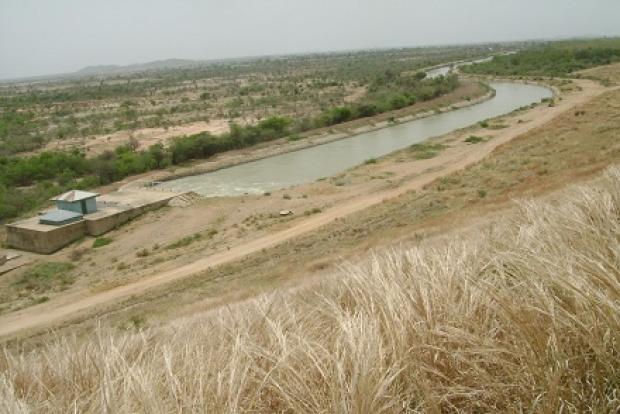The Tiga Dam is a zoned filled earth dam located on River Kano, 70 km south of Kano City. It is one of the largest dams in the country and was designed and built between 1970 and 1974. This Dam is the cornerstone of water resources development in the Kano River Valley in Kano State and Hadejia River Valley in Jigawa State. The Dam sustains irrigated agriculture for thousands of hectares under the Kano River Irrigation Project and the Hadejia Valley Irrigation Project located in Kano and Jigawa States respectively.
In addition water supply to the formal irrigation schemes, water is also released from the dam into the river system for use by thousands of farmers along the river course in Kano, Jigawa, Yobe and Borno States for the production of a wide variety of food and cash crops. The Dam is also the major source of drinking water for Kano Metropolis as well as other towns and villages along the river course within the riparian States.
The Tiga Dam has the following features:
a. Type of Dam – Zoned Earth fill
- Crest Length – 6,000m
- Structural Height – 48m
- Hydraulic Height – 68m
e. Maximum Base Width – 274.30m
- Total Storage Capacity – 1,974mil.m3
- Active Storage Capacity – 1,845mil.m3
- Reservoir Surface Area – 18,900 hectares
- Total Volume of fill Material – 18mil.m3
- Spillway Type – Free Overflow Concrete Ogee (457m)
- Emergency Spillway Width – 200m
The emergency spillway was constructed to lower the reservoir level to reduce pressure on the dam and make it more stable and safe. The Dam is equipped with three outlets as follows:
- The main outlet is a 3.65mÆ conduit supplying a 2.2mÆ Howell Bunger regulating valve.
- 2Nos. 90 cmÆ conduits with 60 cm regulating valve.
The main Dam outlet, comprising of bulkhead gates, butterfly valve, etc, is installed in the outlet valve chamber, which is submerged 16 meters below the full supply level. This outlet supplies water to the Ruwan Kanya Reservoir through the Main Canal I.

